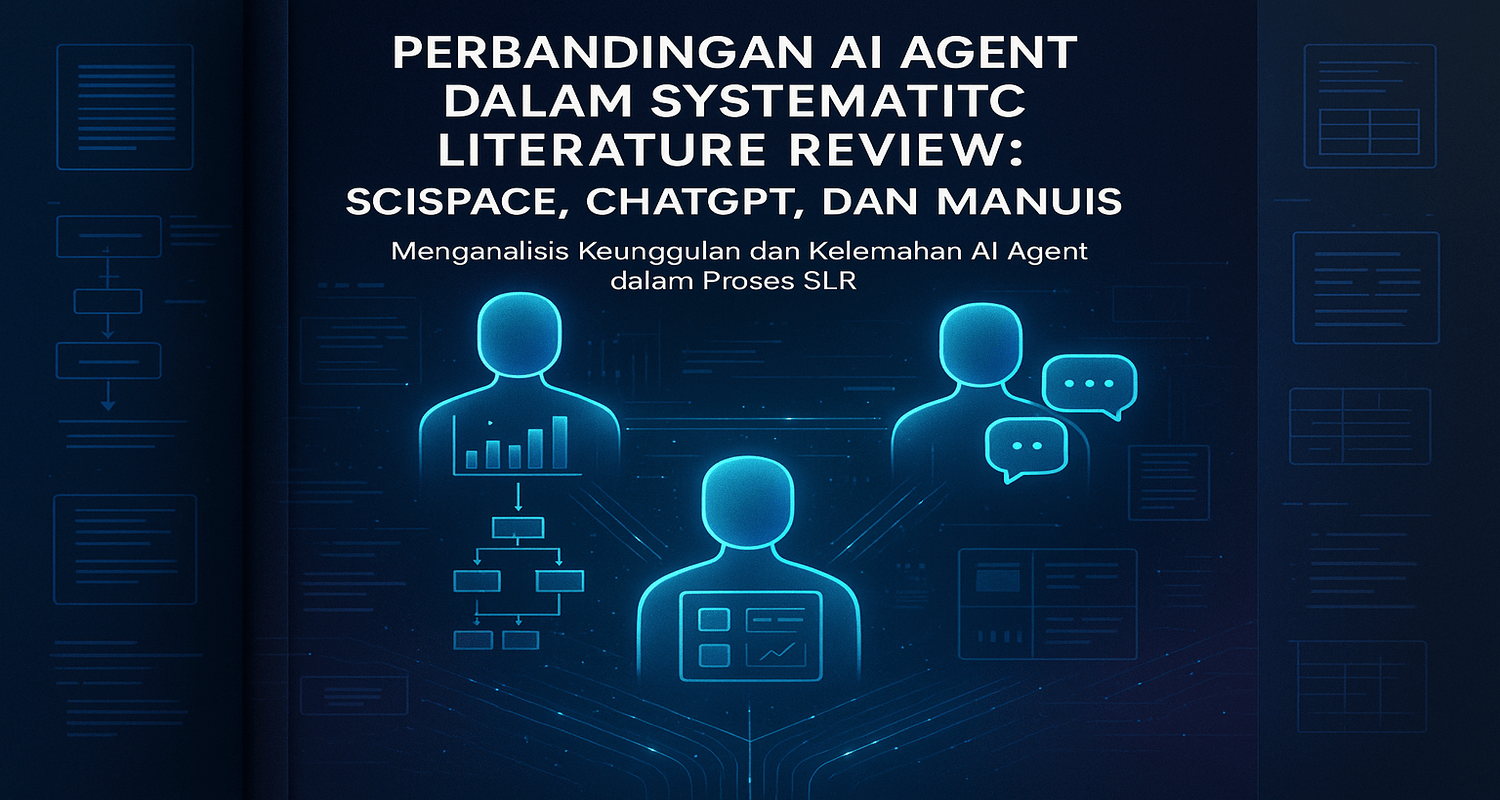In the world of scientific research and publishing, the Systematic Literature Review (SLR) process often requires a significant amount of time and effort. However, with advances in technology, AI can now help speed up this process, with many platforms offering AI Agent features to make it easier for researchers to conduct systematic literature reviews. Among these platforms, SciSpace, ChatGPT, and Manus are three of the most widely used options.
In this video, a test was conducted to see which of these three
platforms provided the best results in performing an SLR using the same prompt.
SciSpace demonstrated exceptional ability to work independently, from
formulating research questions and conducting literature searches to preparing
PRISMA flows. This platform also provides highly detailed outputs, including
comprehensive analysis tables and attractive data visualizations. After
receiving the prompt, SciSpace immediately asks to confirm the correct format
before starting work, ensuring that the results provided are in line with the
user's wishes.
Meanwhile, ChatGPT has a very high speed in working on SLR. The results
provided are quite adequate and ChatGPT can formulate research questions and
perform article searches and screening well. However, the output provided is
simpler than SciSpace, although it still meets the expected standards in SLR.
ChatGPT immediately works on the given task without asking many questions,
making the process faster.
Manus, on the other hand, offers a highly interactive experience. After
receiving a prompt, Manus will start working independently, and users can
monitor its activities directly. Manus is capable of searching for articles,
extracting data, and creating analysis tables. This platform also has an AI
agent that asks users questions to ensure the accuracy of the data obtained,
although this process takes longer than SciSpace and ChatGPT. The results
provided are almost equivalent to SciSpace in terms of depth of analysis,
although there are some limitations in terms of graphics and visualizations,
which are simpler than SciSpace.
When it comes to which platform is the most accurate and reliable,
SciSpace excels in terms of the complexity and depth of its output. This
platform provides more detailed analysis and allows researchers to obtain very
comprehensive results. ChatGPT, although simpler in its output, is still very
useful for those who need speed and ease in conducting SLR. Manus provides a
more dynamic experience with an interface that allows users to monitor the AI's
work process directly, although it requires more time.
Overall, SciSpace is the best choice for those who need in-depth and detailed output, while ChatGPT is more suitable for those looking for convenience and speed. Manus offers a combination of both, with a more interactive experience, although it is slightly slower. All of these choices depend on the specific needs of users in conducting research and SLR, but it is clear that all three platforms make a significant contribution to helping researchers conduct literature reviews more efficiently.
 English
English
 Indonesia
Indonesia



Add New Comment